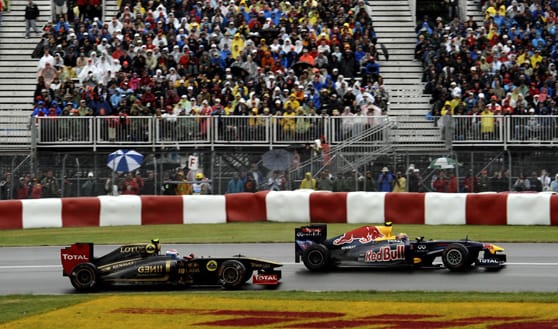
Photo: renaultsport
F1weekly podcast number 511
Motorsports Mondial with Nasir Hameed.
A lap of Valencia from an engine point of view
The race takes place on the streets of the port constructed to host the 2007 America’s Cup. The 5.419km circuit has a combination of low to medium speed corners coupled with long straights, so requires an engine that works across all revs. With 25 corners and over 60 gear changes per lap it requires rapid changes of direction, so the engine must also deliver driveability and responsiveness in and out of the turns.
Sector one
The lap starts on the pit straight but unlike the other street tracks on the calendar where the first turn is a tight corner, the track only curves slightly to the right, allowing drivers to build to just under 300kph before turn 2. The engine therefore needs to be smooth but also responsive off the start. The first heavy braking zone is into turn 2 and turn 3 when the driver will slow from around 293kph and seventh gear to just 85kph and second gear for the right hand complex. Then it’s back on the power for a short burst and another chicane, this time starting with a left hander. After turn five, taken at 110kph, the drivers then accelerate through the gears, staying on the power through a left hand kink to reach 285kph just before entering sector two and the third heavy braking zone of the circuit at turn 8.
Sector two
The longest sector of the circuit, but most of it is taken up by the 970m straight that runs between turn 10 and turn 12. Interestingly there will be one DRS detection zone for two activation points in Valencia. The detection zone comes 130m before turn 8, but can be activated 285m after turn 10 or 35m after turn 14, the curved straight leading to the hairpin. Expect to see a lot of overtaking in the first activation zone as cars peak at 312kph before the right hander of turn 12, a second gear turn taken at just 75kph. After turn 12 the cars then pass into a relatively stop-start complex where cars flick left and then quickly right before the second DRS activation zone, a curved straight where speeds can reach 310kph. Again the overtaking here could be spectacular as at the end of the ‘straight’ drivers brake down to 65kph for the hairpin turn 17. Over this section the balance between top end power and good driveability over the lower revs is particularly important.
Sector three
This sector comprises two of the slowest corners on the circuit (turn 17 and 25) but also flows nicely. From turn 17 drivers build speed over the rest of the sector, maintaining around 280kph through the open corners. The final turn, turn 25, however stops this flow as drivers brake down from around 295kph to just 65kph to round the hairpin leading back onto the pit straight.
View from Rémi Taffin, head of Renault Sport F1 track operations:
Although we’ve had three consecutive races on street circuits, the characteristics of each are quite different. Monaco was very tight and twisty with a low average speed; Montreal a combination of long straights and tight hairpins that give a high top speed, while Valencia has a high average speed, at around 190kph. The track is also relatively smooth in comparison to Monaco and Canada with far fewer bumps.
It’s actually a big challenge to get the mapping for this track right since 10 corners are taken in first, second or third gear, so therefore relatively low speed, but linking the turns are medium to long straights that demand good top end power. We need the engine to be both driveable into apexes but responsive out of the exit onto the straights and with 25 corners in total, the most on any circuit we visit this year, getting the right balance is crucial.
The stop-go nature of the track and the corners also has a large effect on fuel consumption and the rate per lap is very high, in fact it is pretty close to Melbourne, but since the weather is hotter in Valencia we consume a little less over the race.
Of course from this race onwards we will now have to use the same maps for qualifying and the race. Actually this won’t change a huge amount for Renault Sport F1 and how we work with our clients as we have always used very similar maps in qualifying and the race. It will however add a new dimension to the competition but we’re expecting our relative performance levels to stay the same.
Did you know…
Renault engines have now covered more than 85,000 F1 racing laps over the 517 races they have entered since 1977. The 85,000 lap mark was passed during the Canadian Grand Prix.
[audio:http://www.podtrac.com/pts/redirect.mp3/mp3.f1weekly.com/podcasts/06-23-11f1weekly511.mp3]
